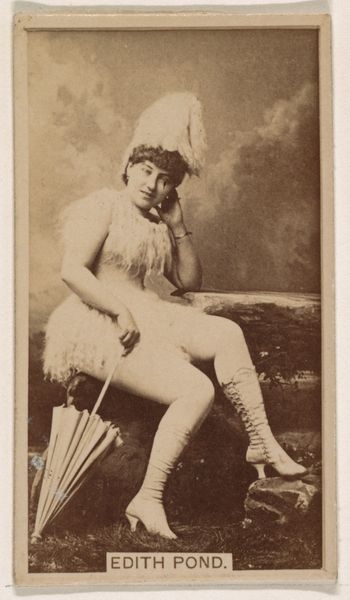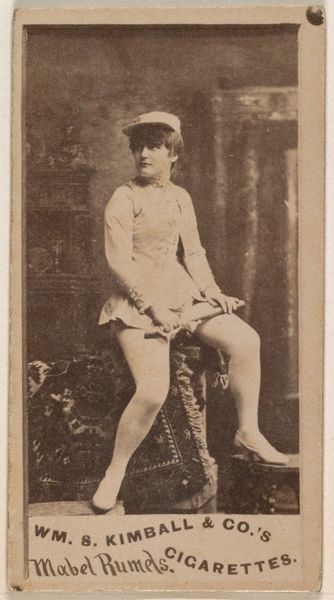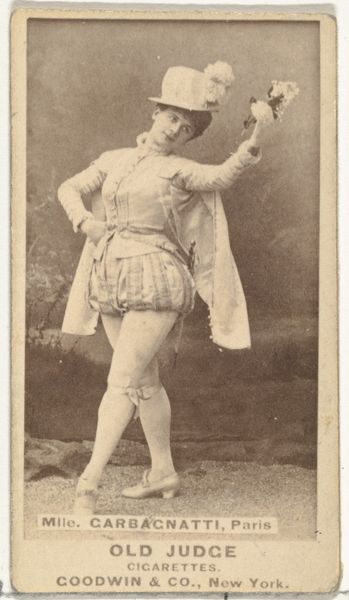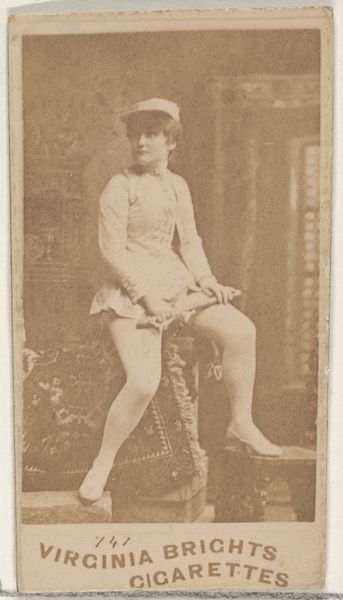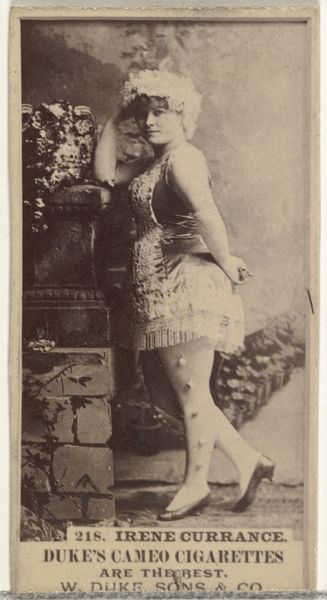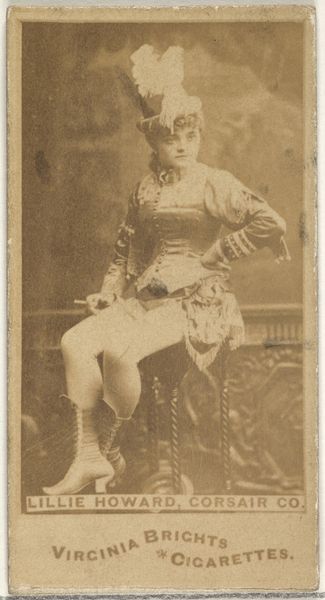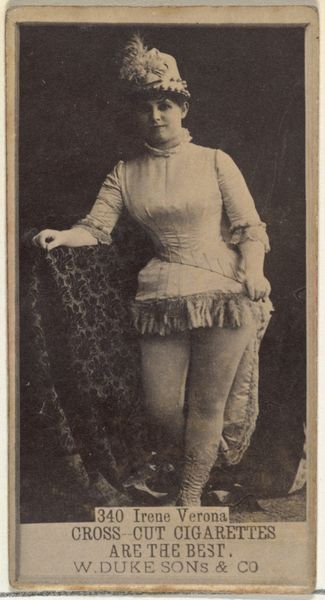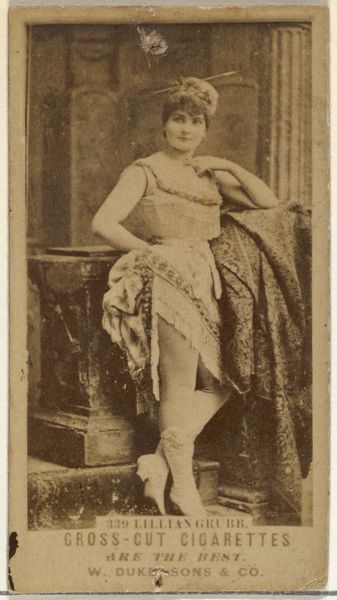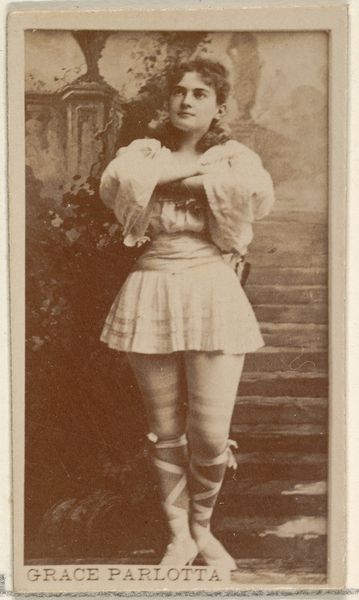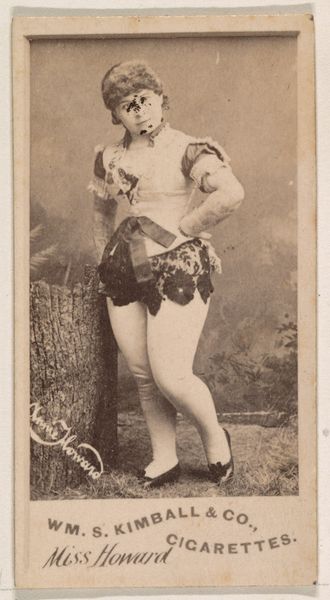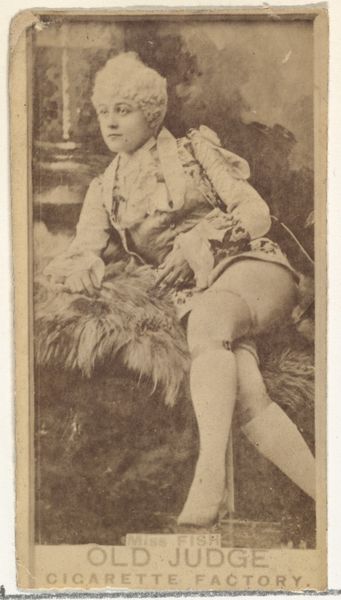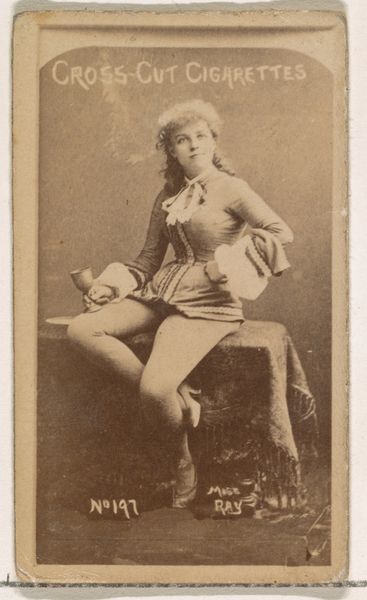
Rosa Lee, from the Actors and Actresses series (N45, Type 1) for Virginia Brights Cigarettes 1885 - 1891
0:00
0:00
drawing, print, daguerreotype, photography
#
portrait
#
drawing
#
aged paper
#
toned paper
#
light pencil work
# print
#
pencil sketch
#
daguerreotype
#
photography
#
personal sketchbook
#
men
#
erotic-art
Dimensions: Sheet: 2 3/4 x 1 3/8 in. (7 x 3.5 cm)
Copyright: Public Domain
Editor: So, this daguerreotype, "Rosa Lee, from the Actors and Actresses series (N45, Type 1) for Virginia Brights Cigarettes," was created sometime between 1885 and 1891 by Allen & Ginter. It has a sepia-toned quality that feels…voyeuristic. What social forces do you think might have influenced its creation and consumption? Curator: It’s fascinating how these cigarette cards offer us a snapshot of late 19th-century celebrity culture and its commercialization. Tobacco companies were actively involved in shaping popular perceptions. This image specifically positions Rosa Lee as both a performer and a commodity, feeding into fantasies of accessibility. It invites consideration: how were women entertainers consumed through the lens of mass media during this period? Editor: So the purpose was to sell cigarettes by associating them with these glamorous figures? Curator: Precisely. It’s about brand association and creating desire. Think about the rise of consumer culture during the Gilded Age and how tobacco companies leveraged images of actresses to market their products. These cards were not just innocent collectibles, but powerful tools in shaping consumer habits and social values. Did the Virginia Brights brand intentionally evoke an upper-class association for its consumers? Editor: That makes perfect sense! It's a portrait, but a very loaded one in terms of who it’s supposed to reach. Curator: Indeed. These images often reflect anxieties about social mobility, class aspirations, and gender roles, as they attempt to address audiences of different levels. The card participated in broader societal conversations, wouldn't you agree? Editor: I see that. Thinking about it as an object of mass consumption gives a new perspective on what it says about the society that made it. Thanks. Curator: My pleasure. Examining art through a social and political lens reveals the complex power dynamics that shaped the past.
Comments
No comments
Be the first to comment and join the conversation on the ultimate creative platform.
